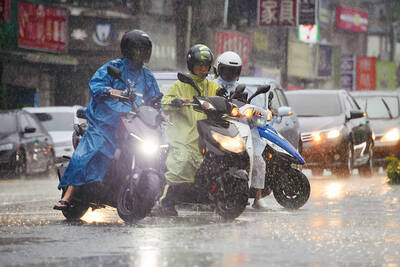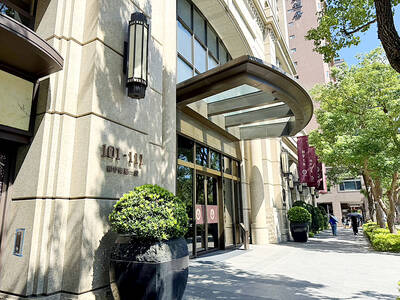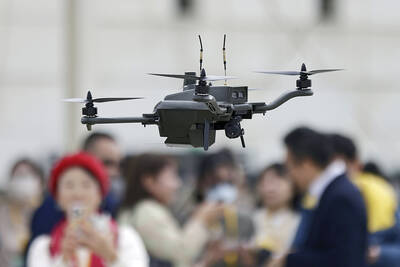Taiwan has won the distinction of being listed as having Asia’s freest media environment for the second consecutive year in the annual Freedom House report.
The US non-governmental organization’s Freedom of the Press 2008 report released on Tuesday in advance of World Press Freedom Day on Saturday lists Taiwan as one of only three Asian countries with “free” media.
“The survey shows that freedom of speech in Taiwan is highly regarded by Freedom House, and that is an honor for all of Taiwan’s people,” Government Information Office Minister Shieh Jhy-wey (謝志偉) said yesterday.
In the face of a decline in global press freedom over the past six straight years, Taiwan has continued moving up the Freedom House rankings, Shieh said.
Of the 195 countries and territories included in the rankings, Taiwan was listed 32nd, up one place from last year. This year’s score for Taiwan was its best ever. Taiwan’s ranking was the highest in Asia, ahead of Japan at 35 and South Korea at 67 — the only three Asian countries where the report lists the media as “free.”
Hong Kong was also ranked 67th.
Freedom House rated each country’s legal, political and economic environment, as well as the degree to which each of these factors affected media freedom.
In its draft report, Freedom House attributed Taiwan’s free media environment to its commitment to judicial independence, economic freedom and a highly competitive media market.
“The Constitution provides for freedom of speech and of the press, and the government generally respects these rights in practice. Taiwanese media are vigorous and lively, regularly criticizing government policy and top officials,” the report said.
In the survey, 72 countries, or 37 percent, were rated as “free,” while 59 nations, or 30 percent, were described as “partly free” and 64 countries, or 33 percent, as “not free.”
China continued to be rated as “not free,” with a global ranking of 181, the same as the previous year.
Freedom House said that China last year tightened media control and Internet restrictions in preparation for the 17th Communist Party Congress, and imprisoned more online journalists and bloggers, despite moderate breakthroughs for investigative journalism and regulations providing somewhat greater access to foreign correspondents.
“In general, journalists who attempted to investigate or report on controversial issues, criticized the [Chinese] Communist Party or presented a perspective contrary to state propaganda continued to suffer harassment, job loss, abuse and detention,” the report said.
Global media freedom watchdogs estimate that at least 29 journalists and 51 cyber-dissidents were in prison in China at the end of last year, more than any other country, while at least nine journalists and online writers were detained during the year over information they had published on the Internet, it said.
Myanmar, Cuba, Libya, North Korea and Turkmenistan, which remained among the worst-rated countries on the list, were joined by Eritrea last year, while a crackdown in Myanmar worsened that country’s already repressive media environment, leaving its score second only to that of North Korea, Freedom House said.

The combined effect of the monsoon, the outer rim of Typhoon Fengshen and a low-pressure system is expected to bring significant rainfall this week to various parts of the nation, the Central Weather Administration (CWA) said. The heaviest rain is expected to occur today and tomorrow, with torrential rain expected in Keelung’s north coast, Yilan and the mountainous regions of Taipei and New Taipei City, the CWA said. Rivers could rise rapidly, and residents should stay away from riverbanks and avoid going to the mountains or engaging in water activities, it said. Scattered showers are expected today in central and

COOPERATION: Taiwan is aligning closely with US strategic objectives on various matters, including China’s rare earths restrictions, the Ministry of Foreign Affairs said Taiwan could deal with China’s tightened export controls on rare earth metals by turning to “urban mining,” a researcher said yesterday. Rare earth metals, which are used in semiconductors and other electronic components, could be recovered from industrial or electronic waste to reduce reliance on imports, National Cheng Kung University Department of Resources Engineering professor Lee Cheng-han (李政翰) said. Despite their name, rare earth elements are not actually rare — their abundance in the Earth’s crust is relatively high, but they are dispersed, making extraction and refining energy-intensive and environmentally damaging, he said, adding that many countries have opted to

FORCED LABOR: A US court listed three Taiwanese and nine firms based in Taiwan in its indictment, with eight of the companies registered at the same address Nine companies registered in Taiwan, as well as three Taiwanese, on Tuesday were named by the US Department of the Treasury’s Office of Foreign Assets Control (OFAC) as Specially Designated Nationals (SDNs) as a result of a US federal court indictment. The indictment unsealed at the federal court in Brooklyn, New York, said that Chen Zhi (陳志), a dual Cambodian-British national, is being indicted for fraud conspiracy, money laundering and overseeing Prince Holding Group’s forced-labor scam camps in Cambodia. At its peak, the company allegedly made US$30 million per day, court documents showed. The US government has seized Chen’s noncustodial wallet, which contains

SUPPLY CHAIN: Taiwan’s advantages in the drone industry include rapid production capacity that is independent of Chinese-made parts, the economic ministry said The Executive Yuan yesterday approved plans to invest NT$44.2 billion (US$1.44 billion) into domestic production of uncrewed aerial vehicles over the next six years, bringing Taiwan’s output value to more than NT$40 billion by 2030 and making the nation Asia’s democratic hub for the drone supply chain. The proposed budget has NT$33.8 billion in new allocations and NT$10.43 billion in existing funds, the Ministry of Economic Affairs said. Under the new development program, the public sector would purchase nearly 100,000 drones, of which 50,898 would be for civil and government use, while 48,750 would be for national defense, it said. The Ministry of